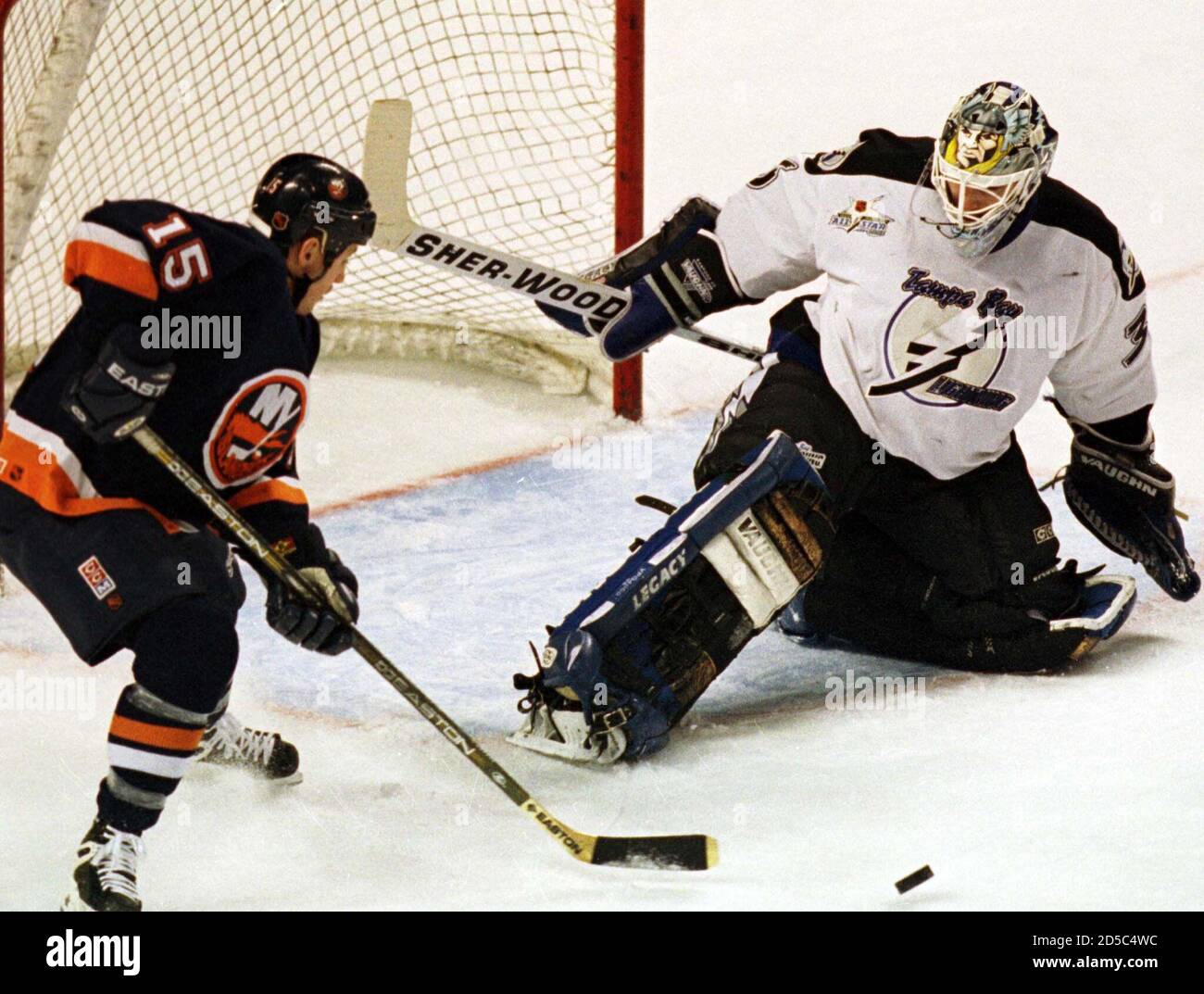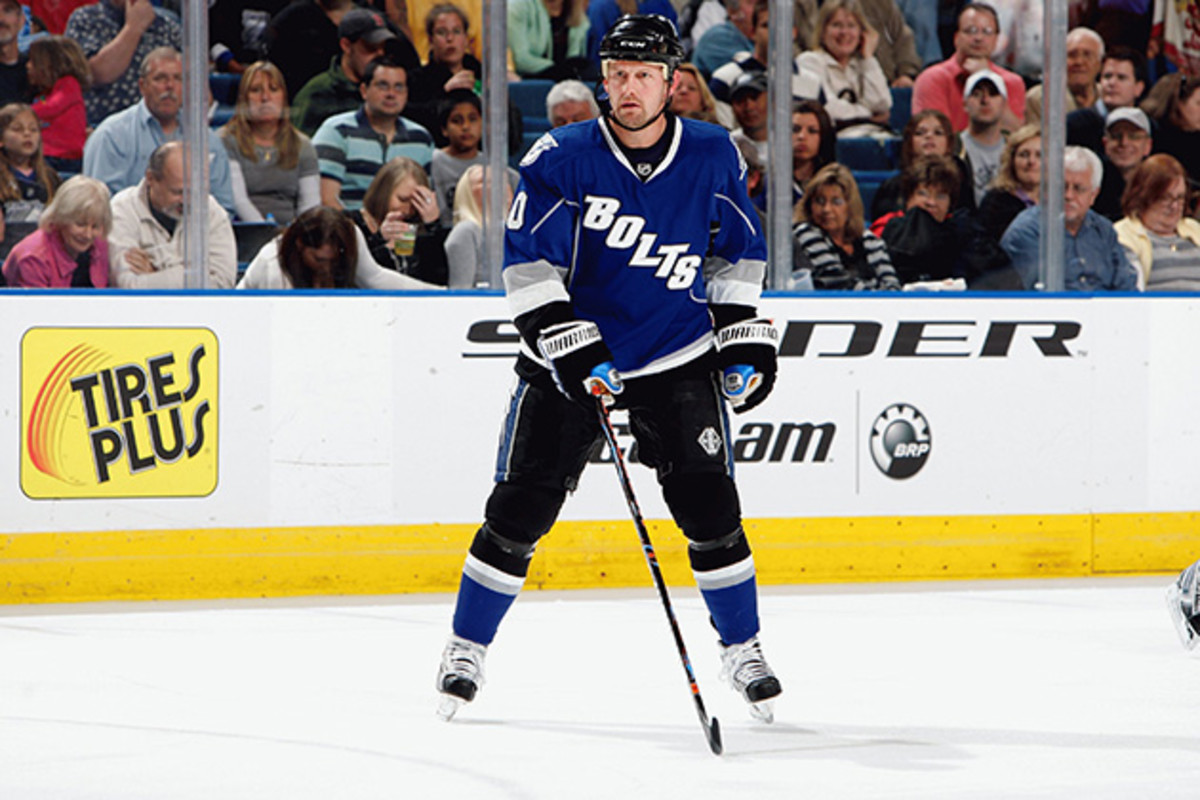Game in brief: The Lightning rolled into Montreal after getting their pants pulled down against the Leafs only 24 hours earlier, scored four first period goals on Jake Allen, and then held on to win 5-3.
Here are my thoughts on the game:
1. The Lightning played the exact same game against Montreal that they did against Toronto: they scored four goals in a row in the first period to chase the starting goaltender, and then were largely ineffective on the attack for the rest of the game before potting a fifth goal in the dying minutes of the third. The difference was the quality of the opponent-- the Maple Leafs are a team with game-breaking offensive talents who enjoy nothing more than driving daggers into the Lighting, and they were able to score enough to claw their way to a win, while the rebuilding Canadiens couldn't pull off the comeback.
2. The Bolts deserve credit for coming out with such a great start, considering they were playing the second game of a back-to-back after what had to be an emotionally draining loss. They scored on the first shift, with Brandon Hagel sending a sick cross-ice pass to Nikita Kucherov, who zapped it home. They rolled through the period, carrying the play and sinking goals from Nick Paul, Alex Barre-Boulet, and Mikey Eyssimont. Kucherov didn't factor into the latter three goals, which was almost a relief-- it's worrisome when your entire offence flows through one player.
3. Montreal pushed back in the second, and while they hardly dominated, they seemed to carry the play for the rest of the game. And while the Lightning can be excused for not completely dominating and overwhelming their opponent from start-to-finish, considering road trip and back-to-back fatigue and the inevitable push-back from a team that got embarrassed in the first period, it does follow the Lightning's disturbing trend of playing gold medal hockey in the first and then house of cards hockey in the second. "Complete game" and "full sixty minutes" are the phrases that will follow theis team all year.
4.The Lightning are making backup goalies look BRILLIANT. For three games in a row the Bolts have caved in their opponent's starter. While both Ottawa goalies suffered largely the same fate on Saturday, both the Toronto and Montreal backups skated onto the ice with no warm-up and played like Glenn Hall Sawchuk Dryden. In Toronto on Monday, Ilya Samsonov made 8 saves on 12 shots for a .667 save percentage before being replaced by Joseph Woll, who was awesome, going 18/19 for .947. In Montreal on Tuesday, Jack Allen managed just 5 saves on 9 shots for a dreadful .556 before making way for Sam Montembeault, who save 22 of 23 for a sparkling .957.
What conclusion can we draw from this? It could be that both Toronto and Montreal's starters were just cold. Or maybe the skaters on both teams got the message and tightened up defensively when the coach yanked the starter. It's also possible that the Lightning eased back on the throttle when they saw how great they were doing. Not consciously, of course. But it's a possibility.
5. The real story of the game of course, was the Lightning's 29-year-old rookie Matt Tomkins finally getting his first NHL win in his third start. Deployed exclusively in the second game of road trip back-to-backs so far this season, Tomkins was finally given some goal support and solid defensive play from his teammates. He stopped 23 of 26 shots (.885), and kept it together during six penalty kills. His performance was tarnished somewhat by Christian Dvorak's shot off the wing with 19 seconds left in the game-- an NHL stopper should make that save. But that's the delight of Tomkins' story: he's not really an NHL goaltender, but a journeyman with a unique career path, who's finally getting the chance of a lifetime to play in The Show due to Andrei Vasilevskiy's back surgery. I'm so very happy for him to get this win. I hope he gets a chance to play in front of a home crowd before his ride comes to an end.
6. This was the best lineup that the Lightning have put on the ice this year. Jon Cooper's decision to play Austin Watson over Mikey Eyssimont on Monday against the Leafs seems ridiculous when comparing what each player brings-- Watson will give you a solid three or four minutes, while Mikey has scored in each of his last two games. Subbing in Zach Bogosian for Nick Perbix was also a solid move. As effective as Perbix was in his rookie year, he seems plagued by hiccups this season, and the occasional scratch might actually benefit him. Tyler Motte, who returned from injury on Monday, brings a lot of energy to the lineup, effectively taking over recently demoted Waltteri Merelä's spot. Merelä was effective in his limited role, but you always got the feeling he was trying to to screw up out there-- it will do him good to spend some time building his confidence in the AHL.
7. Conor Sheary got hurt early in the game and did not return. As ugly as it is to say, he was not missed. Sheary's performance this season has to be regarded by management as a disappointment. His 1 goal and 2 assists in 13 games flatter him, as he has been a non-factor for the Lightning so far this season. Hopefully he comes roaring back when he returns from this injury.
8. It cannot be overstated how good the Lightning special teams have been this year.
Overall, this was a good win, especially coming of an emotional loss, and at the tail end of a road trip. If the Lightning can figure out their overtime troubles, they'll be doing much better, but they're not in a bad place, either with the lineup or in the standings. They return to the ice on Saturday to host the Chicago Blackhawks. Until then, adieu.
-Nolan.

.jpg)











/cdn.vox-cdn.com/uploads/chorus_image/image/52515713/GettyImages-83008942.0.jpeg)


/cdn.vox-cdn.com/uploads/chorus_image/image/60153217/usa_today_10814679.0.jpg)


.jpg)